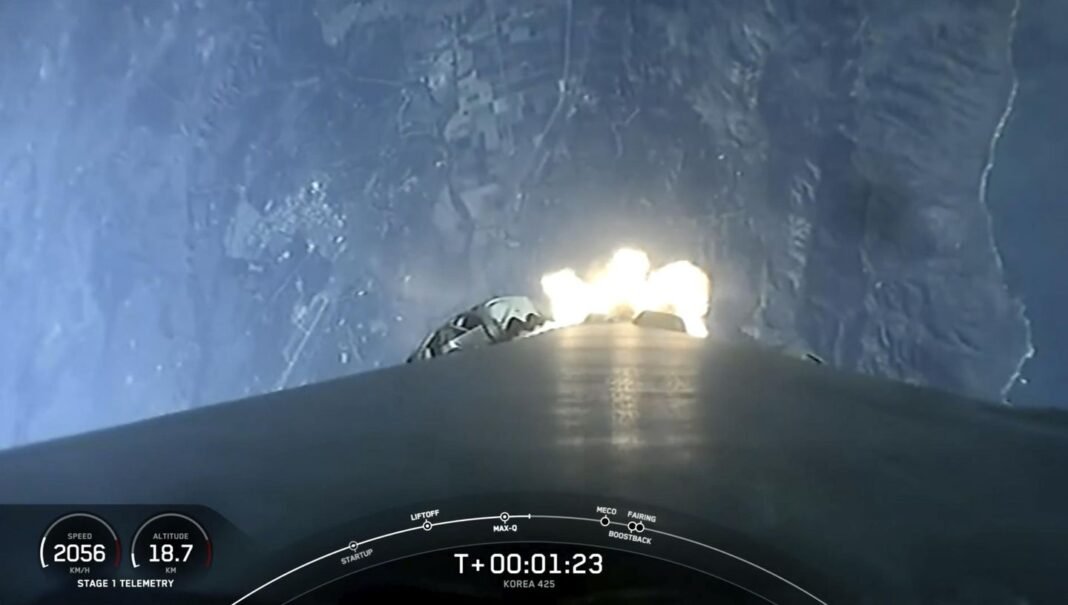The Daily Observer London Desk: Reporter- John Furner
SEOUL, South Korea — North Korea said Sunday that its new Malligyong-1 spy satellite had commenced official operations, after warning the previous day that any U.S. attempt to disable or destroy it would be considered an act of war. The warning came two days after South Korea followed its bitter adversary into space, saying it had successfully put in orbit its first reconnaissance satellite.
North Korean state media reported that satellite data gathered from Pyongyang’s first-ever intelligence satellite in orbit will be sent to the party’s Central Military Commission, to “major units regarded as war deterrence” and to the Reconnaissance General Bureau, which oversees the country’s espionage assets and military special forces.
On Saturday, Kim Jong-un’s regime warned that the “U.S. Space Force’s deplorable hostility” toward the Malligyong-1 is a challenge to national sovereignty “and more exactly, a declaration of war against it.”
The warning was an apparent response to comments from a U.S. Space Force spokesperson last week. Both Seoul and Washington have protested the launch as a violation of U.N. Security Council sanctions on the North Korean regime.
It came as the space race on and over Korea heats up. Russia and the U.S. appear locked in a contest to assist their favored states on the divided, heavily armed peninsula.
On Dec. 1, Seoul placed its first home-grown spy satellite into orbit. It made contact with ground control just over an hour after blast off, according to Korea’s Joint Chiefs. A planned network of five satellites will be able to carry out high-resolution surveillance on North Korea’s key military facilities at 2-hour intervals, South Korean officials said.
That followed Pyongyang’s successful placement of the Malligyong-1 into orbit on Nov. 21 — an operation that boosted national prestige following failed launches in May and August.
The South Korea rocket was lifted into space by a SpaceX Falcon rocket from Vandenberg Space Force Base in California.
While the North Korean satellite rode a home-grown Chollima-1 rocket into orbit, South Korean intelligence has claimed that Russian assistance and advice were key in the success of Pyongyang’s latest launch.
North Korean state media claims that the satellite has already captured imagery of such sensitive U.S. sites as the White House, Norfolk Naval Base and Guam.
However, questions hang over the clarity and the availability of the imagery captured by the Mallygyong-1 is, given that no images have been released by the North.
Writing on North Korea-focused website 38 North, Vann H. Van Diepen, a former U.S. national intelligence officer specializing the strategic weapons proliferation between 2006-2009, said the likely impact of the single North Korean reconnaissance satellite so far was “modest.”
Given debris from imagery equipment found after prior failed launches, the Malligyong-1 is likely to be most useful in “detecting the construction of new facilities, noting substantial increases in activity at known facilities, and detecting large concentrations of troops, ships and aircraft.”
“This would help Pyongyang detect and track a buildup of allied forces in the region, either to warn of a feared attack on North Korea or to prompt North Korea to update its targeting of such facilities and concentrations in an attack it was planning to conduct.”
Speaking to U.S.-funded Radio Free Asia, Space Force spokeswoman Sheryll Klinkel said that the new U.S. service has “a variety of reversible and irreversible means” to frustrate an adversary’s space operations.
Those means, analysts say, include a missile strike or a “proximity operation” by a “space tug” — an orbital robot used to conduct maintenance on conventional satellites — to nudge it out of orbit, said one expert.
And a direct hit is not always needed.
“Rather than a kinetic strike, there are a lot of things they could do,” said Daniel Pinkston, an international relations expert at Troy University who also teaches space security, including “signal jamming or cyber or electronic warfare to disrupt the data link and the capabilities to manage or operate the satellite. … You trail a satellite and jam its signal and suddenly the North Koreans’ data link is not working.”
South Korea has its own expanding space ambitions, from space launch vehicles such as its Nuri rocket program to a fledgling reconnaissance satellite constellation, of which last Friday’s launch was the first placement. Seoul is moving ahead despite a close and deepening relationship with the U.S. military designed to deter a hostile North Korea.
“There is a space and counter-space competition unfolding, and [South Koreans] want independence even though there is cooperation and sharing.”
In addition to its independent programs, South Korea is a partner in the U.S.-led Artemis initiative, a combined robot-manned Moon mission program.
That will spin off dual-use technologies and skills for the South Koreans, Mr. Pinkston said, including space-related AI, computation advances, hardware and robotics.



